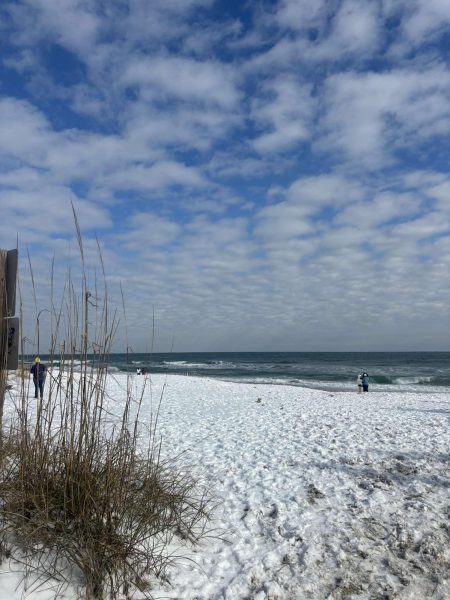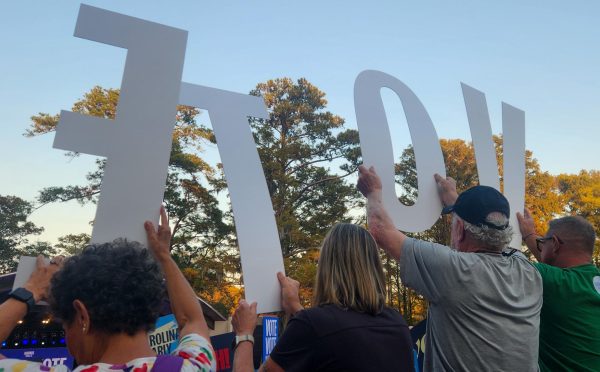Death resurfaces pedestrian cross bridge conversation
On November 1 around 10:45 pm, an adult male was struck and killed walking outside of the designated crosswalk on South College Road.
Hundreds of students wait patiently to cross the seven lane highway daily to travel to and from classes. Since this incident, the resurfacing of building a pedestrian cross-bridge across South College Road has been a common topic of conversation amongst UNCW students.
Students living within the one mile radius of campus are restricted from parking on campus during the hours of 7 a.m. – 4 p.m. Shuttle services are provided, but they are quickly filled and overpacked. This leaves student to walk, bike, or skateboard on their commute.
Nicole Blair, a student at UNCW, lives at the Lighthouse Apartments located on Randall Parkway and walks across the South College intersection about four times per day.
“I never actually feel safe walking across,” Blair said. “The cars never stop at the white lines, and never wait for students to cross before turning right.”
Once this semester, Blair watched her friend get hit by a car crossing the street, even though she was not injured.
New Hanover County has the second-highest population density and second-smallest landmass in the state, which means more cars with less places for them to go. The great amount of traffic that students must pass daily is not only a nuisance but it’s also incredibly dangerous.
In 2011, Wilmington city officials and UNCW personnel worked together in attempt to establish a passing on the building of a pedestrian crosswalk across South College Road. Despite efforts, the project was officially denied in 2013.
City Councilman Charlie Rivenbark had a lot to say about this solution to the critical commute imposed on students.
“I would advocate for the resurfacing of the crosswalk myself, but there needs to be an agreement on all local levels for anything to be put to action,” Rivenbark said.
The project itself would cost about $6 million. When originally brought to surface, the high price tag was to be split between the city of Wilmington, UNCW, and the Department of Transportation. The reason for its denial was a lack of unified support for the project.
“No one thinks it’s a bad idea,” Rivenbark added, “It is just a lot of money for something we are not sure everyone would actually use.”
According to statistics, in 2013 alone there were six different deaths associated with pedestrian traffic accidents in the city of Wilmington. With the yearly growth rate of 1.99 percent, automobile influx has only increased as well as the danger imposed on pedestrians.
Talking to Detective C. T. Bost of the UNCW Police Department, he discussed his own take on the issue. “I have to say I am disappointed that the cross-bridge didn’t get approved for safety purposes both to pedestrians and drivers.”
The University Police deal with similar issues with student traffic on campus. In 2014, there were six reported pedestrian accidents.
“Everyone rides bikes or skateboards and they cross the street assuming the drivers are not going to hit them,” Bost said. “They are supposed to stop and walk across the street with their bike or board in hand.”
Until action is taken, it is important for students to always be aware of their surroundings while walking to and from campus in any area. In any situation, it does not matter whether the driver or walker was at fault. What matters is the safety of all lives in means of commuting.
Whether the city will attempt to resurface the pedestrian walkway bridge solution is not known at this time, but a strong support from students would help bring the idea to surface.











